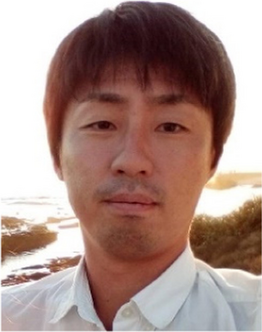Vol.34 (Feb) 2024 | Article no.11 2024
In order to promote research in physics in Japan, the Physical Society of Japan (JPS) and the Association of Asia Pacific Physical Societies (AAPPS) shall jointly award the “AAPPS-JPS Award” for young JPS members who achieve outstanding research results.
The 2024 winners of the second Association of Asia Pacific Physical Society (AAPPS)—the Physics-JPS Award, are listed below.

Tatsuya Kobayashi
National Institute for Fusion Science, National Institutes of Natural Sciences, Associate Professor.
Experimental study on nonlinear emergent phenomena in high-temperature plasmas.
Dr. Tatsuya Kobayashi has made outstanding achievements in experimental research on nonlinear emergent phenomena with structure formation in ultrahigh-temperature plasmas. In magnetic fusion plasmas, heat and particle transport due to turbulence is one of the important issues for fusion development. In addition to the diffusion process due to the Coulomb collision, turbulent electric field fluctuations drive collective motion of charged particles across the magnetic field and enhance transport. Meanwhile, highly symmetric plasma flows are occasionally generated due to nonlinear effects of collective motion that lead to the plasma transition to a “high confinement” state. Dr. Kobayashi and his collaborators have developed a cutting-edge high-resolution measurement and state-of-the-art analysis system to survey ordered structures in turbulence and have achieved many important results by clarifying the relationship between the ordered structure and plasma inhomogeneity (non-equilibrity). He has also uncovered the nonlinearity of self-regulated oscillations between a plasmoid and radiation intensity in the plasma periphery and has successfully modeled it using a predator–prey relationship. These results are expected not only to provide important scientific knowledge for the realization of fusion energy but also to contribute to the elucidation of the dissipative structure formation, which is universally observed in various systems, ranging from astronomical and space plasmas to semiconductor process plasmas.

Akito Sakai
Faculty of Science & Graduate School of Science, The University of Tokyo, Lecturer.
Anomalous metals beyond the conventional magnetic quantum criticality scenario such as quadrupole Kondo lattice systems and geometrical frustrated quantum critical systems.
Dr. Akito Sakai is a young researcher who leads research on quantum matter in strongly correlated electron systems and topological magnetic materials. He has been conducting research on new quantum critical phenomena by extending the conventional framework for understanding magnetic quantum critical points to include quadrupolar order, frustrated magnetic metals, and topological magnetic materials. He received this award in recognition of his discovery of a new compound that will serve as the stage for experimental research on the quadrupole Kondo lattice system and the experimental elucidation of its unconventional physical properties.

Junsei Tokuda
Institute for Basic Science, Center for Theoretical Physics of the Universe, Senior Researcher.
S-matrix consistency between quantum gravity and low-energy physics.
No consistent quantum theory of gravity is known today. The standard model of particle physics must be modified at high energies where the effect of gravity becomes significant and be integrated in the theory including gravity. In that sense, the standard model should be understood as a low-energy effective theory of yet unknown theory, but still some conditions that the standard model must obey can be obtained. Dr. Tokuda et al. derived a condition for particle scattering amplitude and consider the light-by-light scattering to show that non-perturbative effect is important to saturate the condition. This work shed a light on the relation between the standard model and gravity and deserves the AAPPS-JPS Award.

Natsumi Nagata
Graduate School of Science, The University of Tokyo, Assistant Professor.
Theoretical studies on dark matter and astroparticle physics.
Dr. Natsumi Nagata obtained more stringent constraints on the axion decay constant than those given by SN 1987A by analyzing the consistency with observed surface temperatures of a neutron star in Cassiopeia A. He also showed that internal heating effects caused by out-of-β-equilibrium in the cooling process of neutron stars can have a significant impact on the possibility of using surface temperature observations of neutron stars to search for dark matter.
Furthermore, he pointed out that the gravitational acceleration of neutron stars causes dark matter particles to collide with neutron stars at high energies, and thus, electroweak multiplet dark matter can be efficiently searched for through inelastic scattering processes. He is highly expected to continue to play a leading role in this field.

Shuhei Hayakawa
Department of Physics, Tohoku University, Assistant Professor.
Double-strangeness hypernuclear research.
Double-hyper nuclear will make an important contribution to understanding nuclear forces, and this has been an ongoing challenge for many years. Dr. Hayakawa’s highly accurate measurement of the mass (Ξ binding energy) of the Ξ hyper nucleus is very important as a milestone in this research field. Dr. Hayakawa was in charge of the spectrometer system for the high-purity K beam that was the basis of this result, and his contribution was significant. We believe that further progress can be expected based on these results, and Dr. Hayakawa is worthy of the award.
The T2K Collaboration, Constraint on the matter-antimatter symmetry-violating phase in neutrino oscillations. Nature 580, 339 (2020)
If you'd like to subscribe to the AAPPS Bulletin newsletter,
enter your email below.